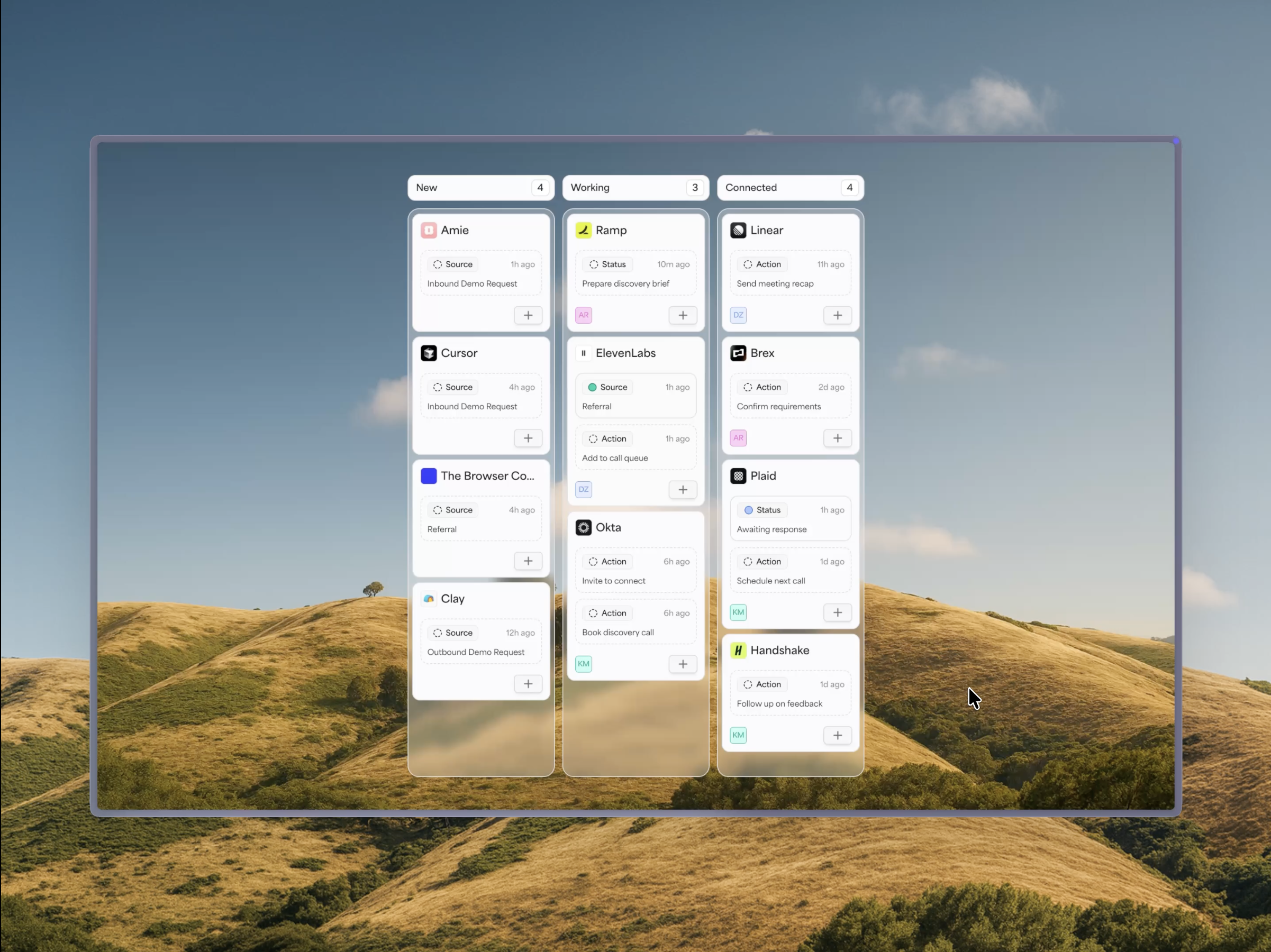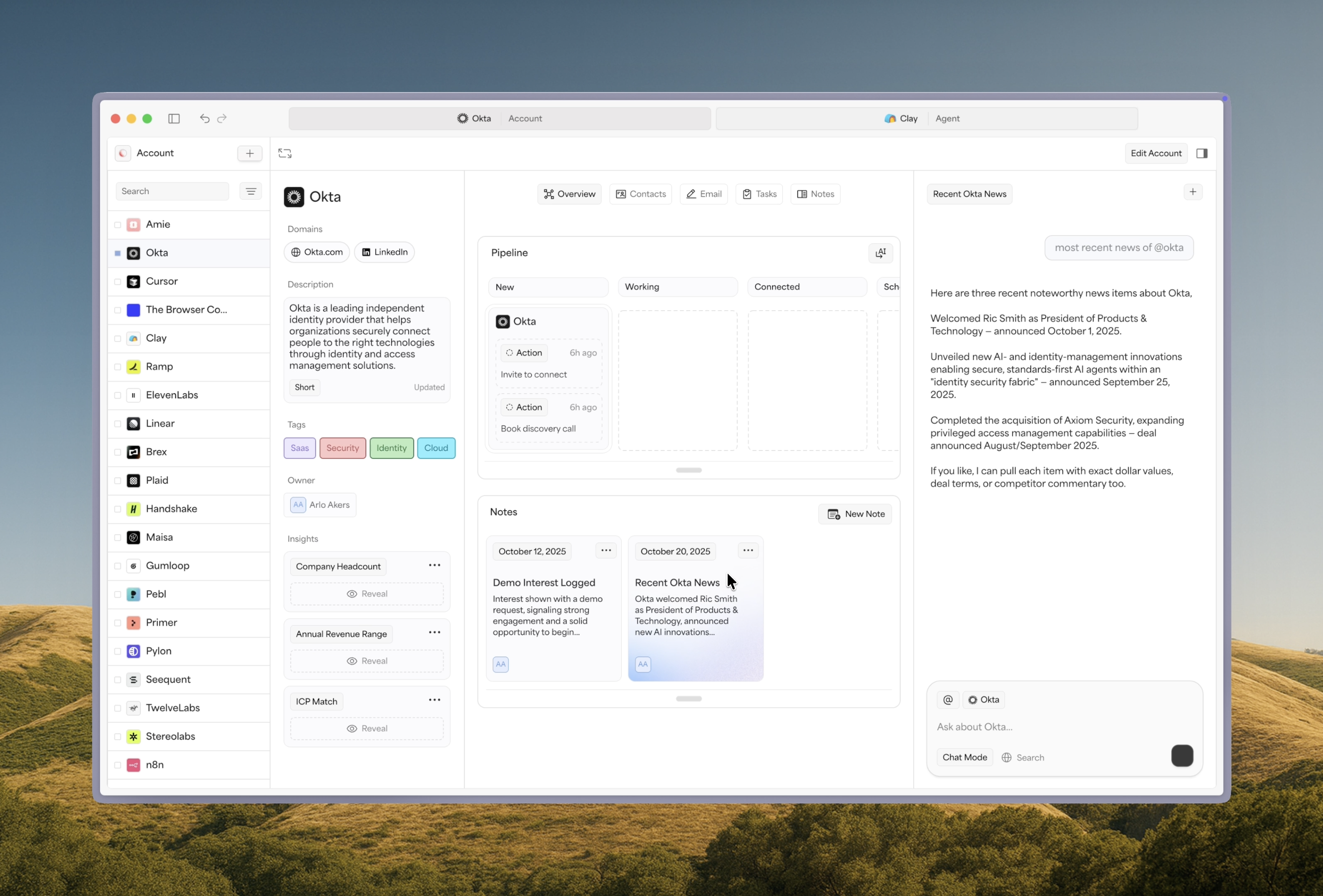Zailor
Rethinking Revenue Workflows with Embedded Agents.
Role
Product Designer
Team
1 Designer (me), 1 Project Manager
Disciplines
Interface design, Prototyping, Product strategy, Research
Year
2025
How Might Embedded Agents Rethink Revenue Workflows?
Overview - In the summer of 2025, I led product design on an account tracker and GTM intelligence tool built for revenue and customer-facing teams. My focus was on interface design and research, exploring how embedded agents can transform static workflows into adaptive systems.
Revenue teams are buried in complexity.
Problem - SDRs, account executives, customer success managers, and revenue operations teams move between dozens of tools every day. They jump between enrichment platforms, CRM dashboards, outbound tools, LinkedIn tabs, internal spreadsheets, and shared documents. They search for leads, gather context, update records, and attempt to stitch all of it into a coherent motion.
Data can become fragmented. Insights arrive too late. Valuable time is spent managing systems instead of managing relationships.
Optimizing revenue workflows through embedded AI agents.
Solution - Zailor is designed to sit at the center of revenue operations. It is built on three core pillars: account tracking, embedded intelligence, and agent-driven orchestration.
Stay in context while you work
AI searches across the web to surface the latest company news, funding updates, and key data points, keeping everything you need in a single view with no tab switching.
Reveal enriched company insights
Access accurate headcount, annual revenue range, and key metrics at a glance, helping teams qualify accounts faster and focus on the opportunities that matter.
Build and deploy intelligent agents
Design adaptive agents that track accounts, surface insights, and move work forward automatically. Configure their behavior and action, starting from presets or building custom agents that match your team's workflow.
Learning Revenue Ops Through Collaboration
Research - To understand how revenue teams actually work, I conducted several co-design sessions with SDRs, AEs, and RevOps professionals. Rather than relying on paper flows or static wireframes, we built and iterated real flows together in Lovable, adjusting interactions live as they provided feedback.
Designing with the intended user base instead of for them allowed us to move faster, validate assumptions immediately, and ensure each workflow decision aligned with how they already think and operate. These sessions became the foundation for the final interaction model.
Exploring agent-powered flows through rapid, coded experimentation.
Prototyping and Testing - Instead of relying on static screens, I built interactive prototypes using Lovable, Next.js, and Cursor, which made trial and error faster and far more intuitive. Coding early meant I could test responsiveness, refine micro-interactions, and consider edge cases like loading and empty states from the start.
We then tested these flows with revenue professionals. Observing how they used them revealed opportunities to refine the experience.
Intelligent systems should remove friction, not control.
Reflection - Complexity should not always be hidden, it should be handled. This project showed me how intelligent automation can reduce the burden of tools without reducing capability. Designing with revenue teams kept the system grounded in reality, and building in code kept assumptions honest. I learned that the real challenge in agent design is balancing autonomy with trust, and ensuring technology acts on behalf of people, not the other way around.




_C.png)
_C.png)

